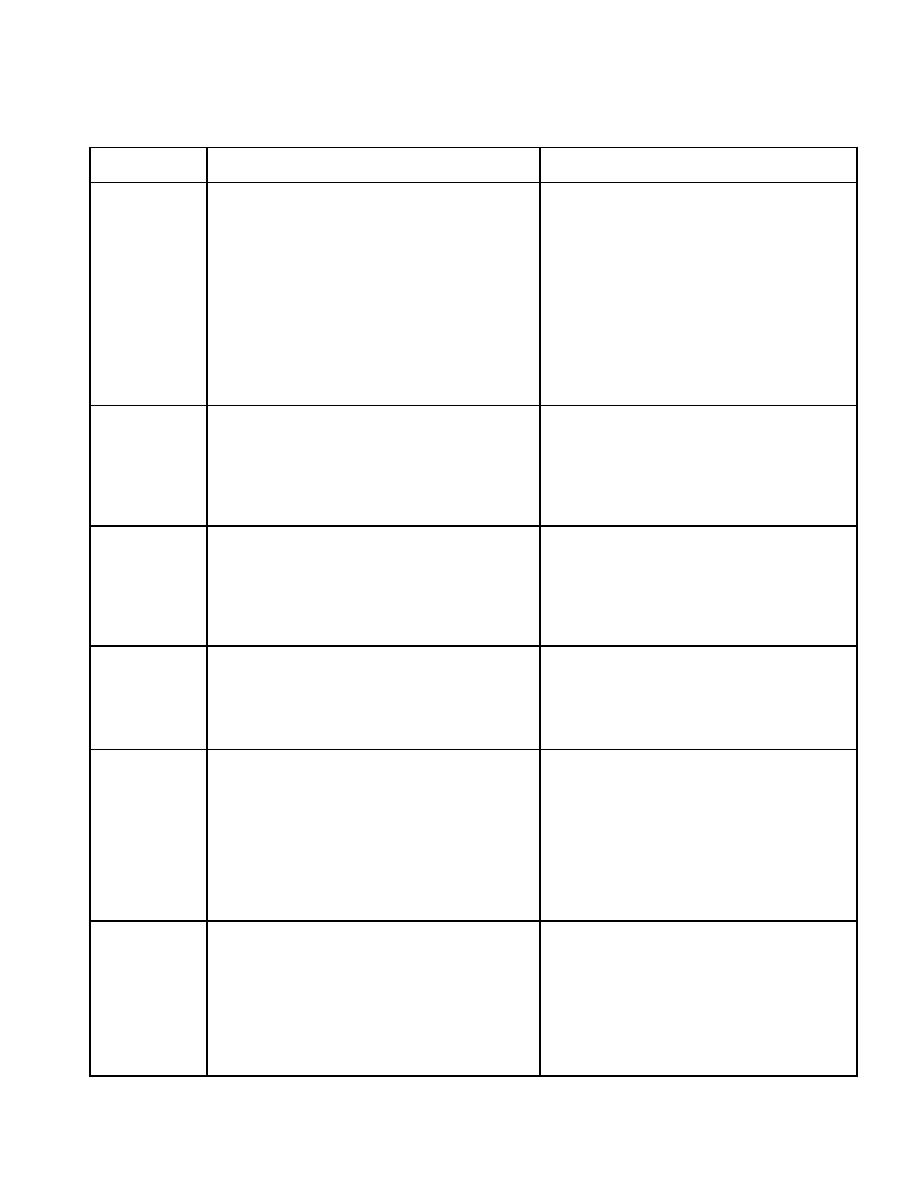
UFC 4-150-06
12 December 2001
Table 5-11 Selection Factors for Berthing Arrangements
Berthing
Advantages
Disadvantages
System
Marginal
Solid fill supports deck loads without expensive
Costs per berth greater than for pier systems.
Wharf
Ratio of berthing space to length of
(Figure 5-15a)
Accessibility of entire upshore area for working
waterfront is low.
space, storage space, laydown operations, and
Berthing length is limited to length of face of
traffic circulation adds to the utility of the wharf
wharf, unless mooring dolphins are used to
as compared to pier or offshore wharf systems.
extend usable length.
Permits utilization of surplus fill material.
Suitable for sites where pier cannot be
projected out from shore and where dredging of
a recessed basin for piers would be expensive.
Also suitable where the navigation channel is
too narrow to permit maneuvering into finger
piers.
Square Pier
Solid fill supports deck loads without expensive
Economy depends on availability of
(Figure 5-15b)
inexpensive fill.
Upshore area is accessible for storage and
The requirements for fill or piling are great
traffic circulation.
compared to the usable space provided on
Side-berth accommodations add to linear feet
the deck.
of berthing accommodations.
Permits utilization of surplus fill material.
Rectangular
Length of accommodation for a given length of
In some bottom formations, any considerable
Pier and Slip
shoreline is great. In general, this system has
later dredging of slips may be hazardous.
(Figures 5-15c,
the lowest relative cost per berth.
Space between slips is limited, and adds to
15d, and 15f)
the density of navigation traffic.
Reduces width of navigation channel.
Cargo handling is restricted unless pier has
at least 6 acres per berth.
Angle Pier and
Layout is advantageous compared to
Construction is more difficult and expensive
Slip
rectangular pier-and-slip system where
than that for rectangular pier-and-slip system.
(Figures 5-15e
navigation channel is too narrow for
Corners of the pier are waste space where
and 5-15g)
perpendicular pier layout. Currents or
cargo-handling equipment cannot work.
prevailing winds may also dictate the use of
angle piers.
Offshore
Layout adaptable to many types of construction
When a single causeway is used, craft along
Marginal
methods, including floating wharfage.
the causeway create loading and unloading
Wharves
Moorings for shallow-draft craft may be
and traffic problems.
(Figures 5-
provided along the sides of the causeway.
Usually requires separate moorings,
15h, 5-15i, and
When multiple causeways are used, a movable
supported by the wharf structure, because a
5-15j)
section can be provided to give access to
relatively large area of the wharf structure is
space between causeways.
not tied to shore anchorages.
Suitable along rocky shores.
Suitable where water of adequate depth is
located at large distance offshore.
Floating
Floating wharves can be moored in water too
Maintenance is high. (Maintenance of steel
Wharves
deep for pile driving.
floating wharves is higher than that of
Pontoon or prefabricated sections can be used.
concrete floating wharves.)
Equipment can be quickly assembled, moved,
Not suitable for heavy craft nor in exposed
and replaced.
locations without heavy anchorage
requirements.
Difficult to maintain alignment in heavy tide
range.
Restricted cargo-handling capability.
5-59



 Previous Page
Previous Page
